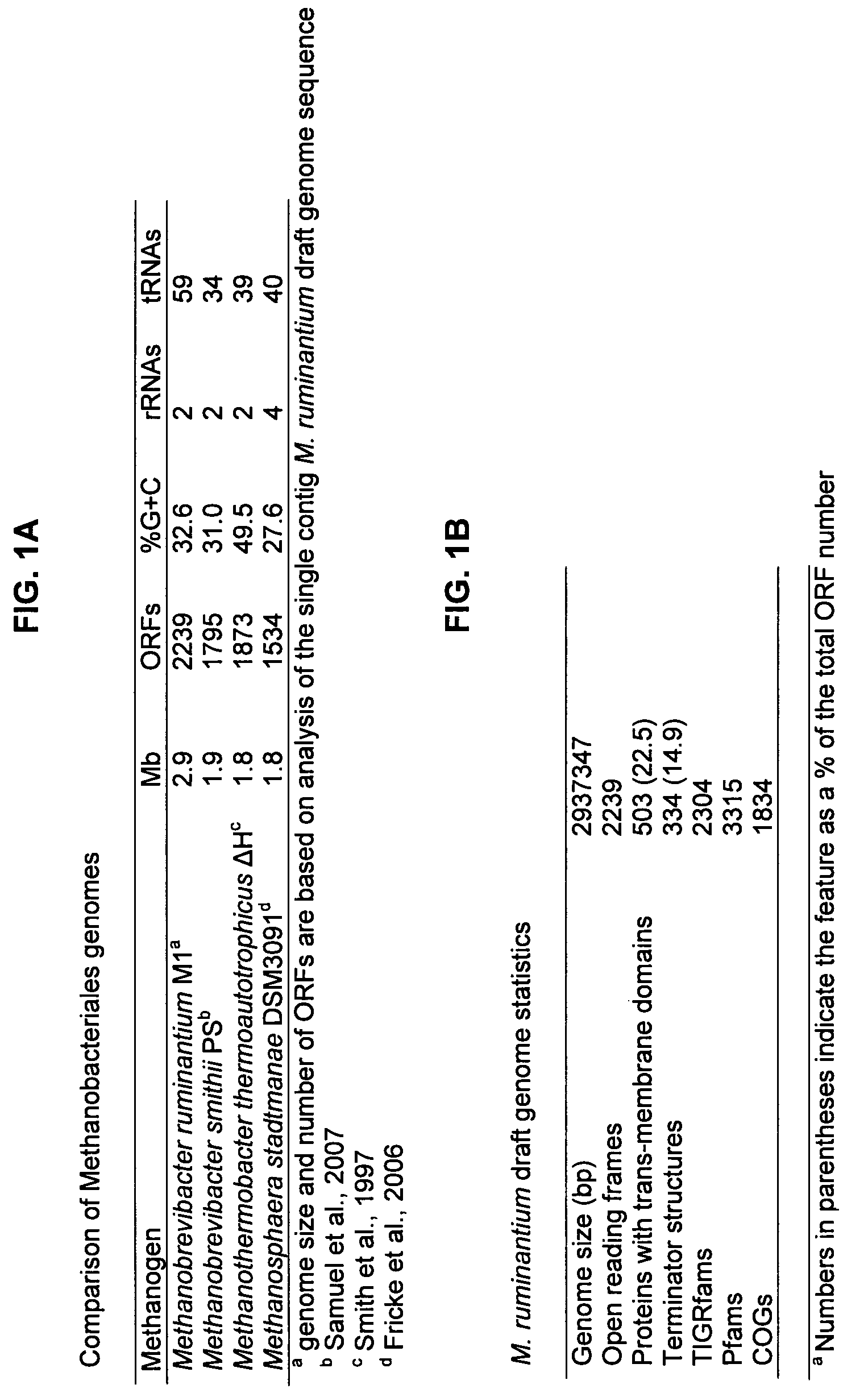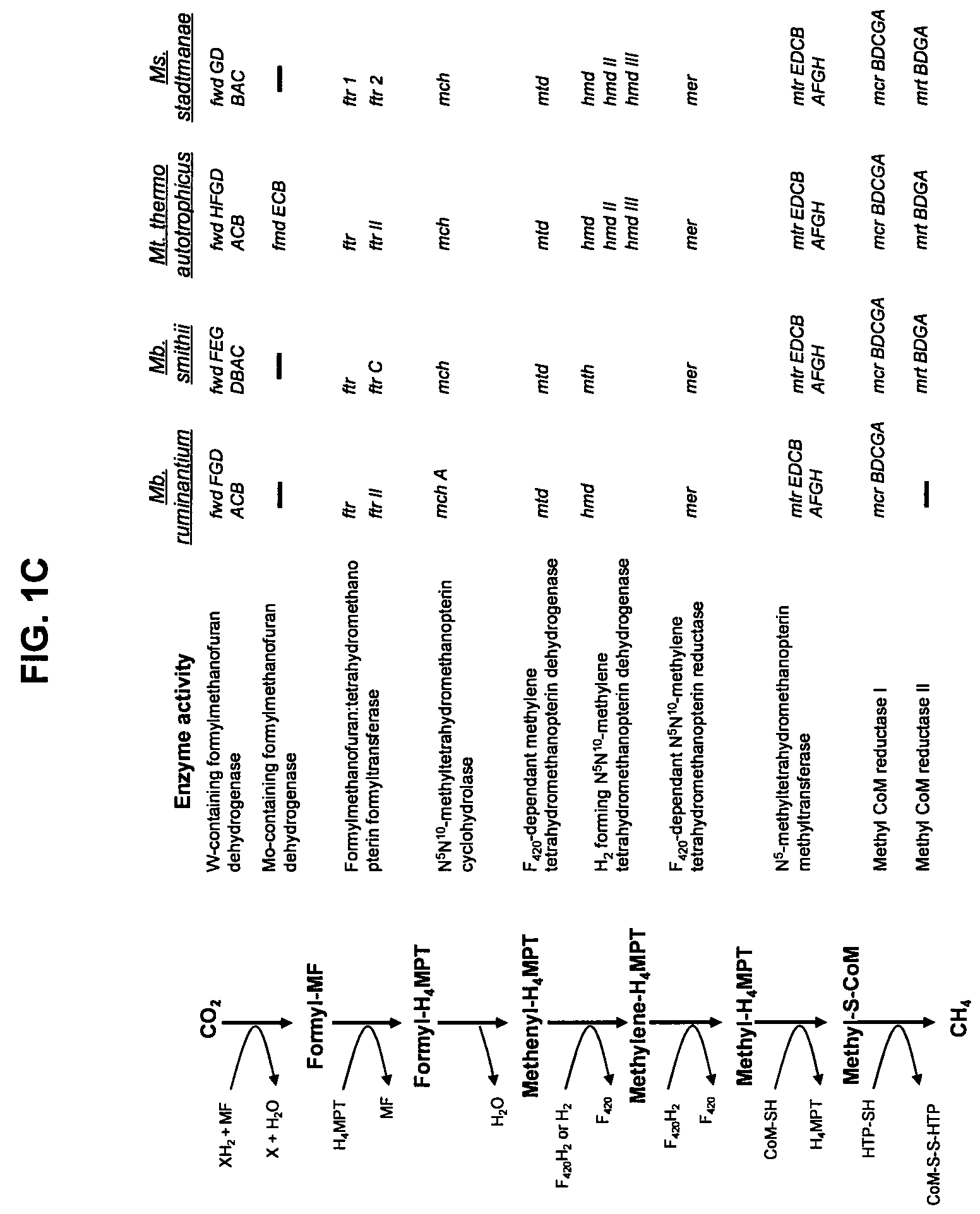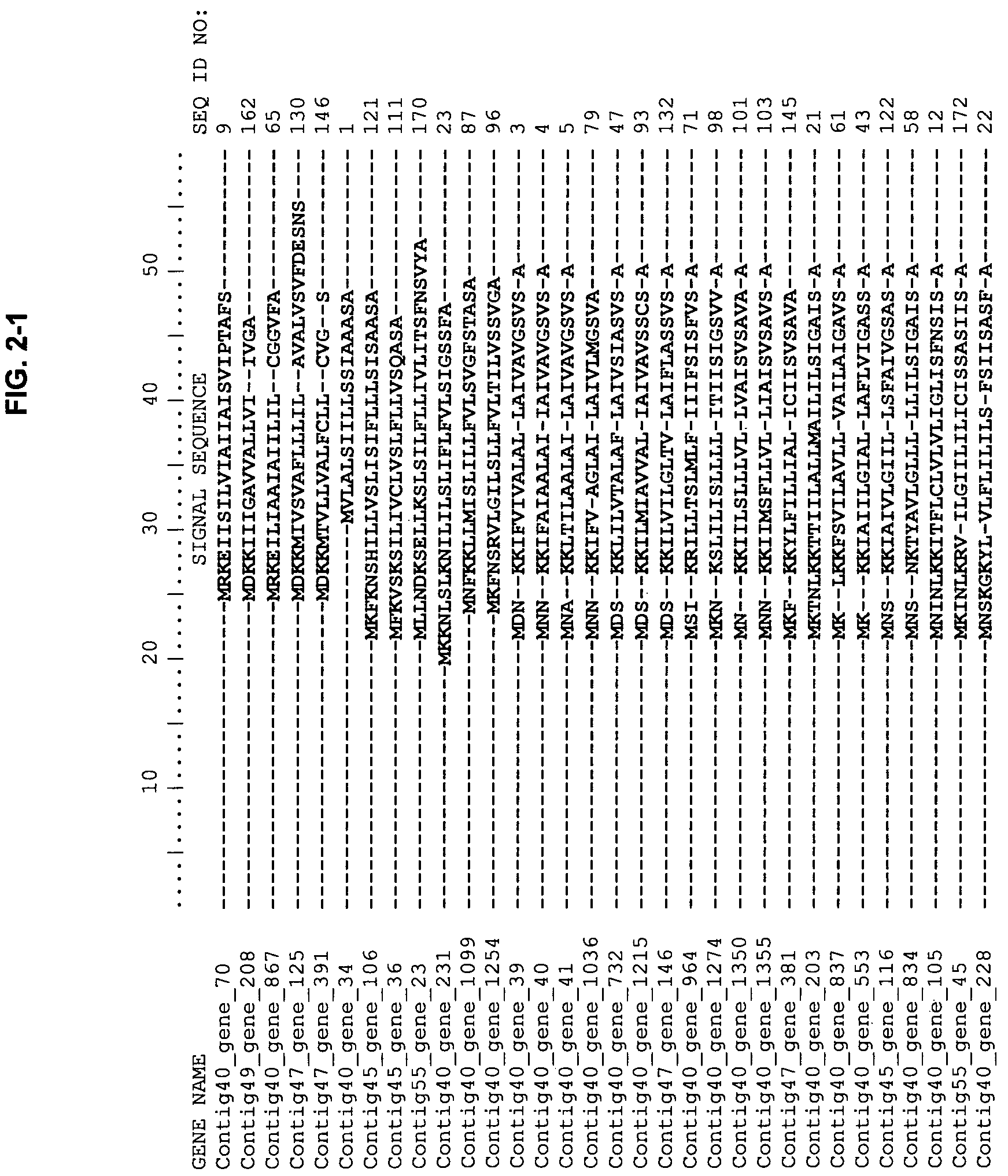Cell-permeabilising peptides and polypeptides for microbial cells
a technology of microbial cells and permeabilising peptides, which is applied in the direction of depsipeptides, peptide/protein ingredients, fusion polypeptides, etc., can solve the problems of requiring the government to purchase carbon credits, currently estimated to cost $350 million, and loss of 8-12% of the gross energy produced in the rumen
- Summary
- Abstract
- Description
- Claims
- Application Information
AI Technical Summary
Benefits of technology
Problems solved by technology
Method used
Image
Examples
example 1
Materials and Methods
Genome Size Estimation
[0145]Methanobrevibacter ruminantium strain M1T (DSM1093) was grown on BY+ medium (basal medium, Joblin et al., 1990) which consists of [g / l] NaCl (1), KH2PO4 (0.5), (NH4)2SO4 (0.25), CaCL2.2H2O (0.13), MgSO4.7H2O (0.2), K2HPO4 (1), clarified rumen fluid (300 ml) dH2O (360 ml), NaHCO3 (5), resazurin (0.2 ml) L-cysteine-HCl (0.5), yeast extract (2), and Balch's trace elements solution (10 ml) (added trace elements; Balch et al., 1979) which consists of (g / l) nitrilotriacetic acid (1.5), MgSO4.7H2O (3), MnSO4.H2O (0.5), NaCl (1), FeSO4.7H2O (0.1), CoCl2.6H2O (0.1), CaCl2 (0.1), ZnSO4.7H2O (0.1), CuSO4.5H2O (0.01), AlK(SO4)2.12H2O (0.01), H3BO3 (0.01), Na2MoO4.2H2O (0.01), NiSO4.6H2O (0.03), Na2SeO3 (0.02), and Na2Wo4.2H2O (0.02). Genomic DNA was extracted using a freeze-grinding method. Cells were harvested by centrifugation, and the cell pellet was placed in a pre-chilled mortar, frozen with liquid nitrogen, and gently ground to a fine powde...
example 2
Experimental Results
[0156]Size estimation of the M. ruminantium genome by restriction enzyme digestion of genomic DNA and sizing of fragments via PFGE, indicated a single chromosome of approximately 2.5-2.9 Mb. Initial sequencing of large and small insert clones (6 fold draft coverage) and assembly of the sequence into contigs indicated that a 40 Kb region of the genome was highly over-represented (>20 fold), particularly within the small insert library. Because of this large sequence bias, additional sequencing was carried out (2 fold theoretical genome coverage) for only large insert clones yielding a final 8 fold coverage from Sanger sequencing. The 8 fold draft phase sequence was assembled into 756 contigs which were linked via 105 scaffolds. Further pyrosequencing was carried out to an additional ˜10 fold coverage and incorporation of these sequences into the assembly resulted in the contig number dropping to 27. Subsequent gap closure using inverse and long range PCR technique...
example 3
Overview
[0160]Methanobrevibacter ruminantium was chosen for genome sequencing because of its prevalence in the rumen under a variety of dietary conditions (based on cultivation and molecular detection data), the availability of cultures, its amenity to routine growth in the laboratory, and the relatively large amount of previous studies and background literature available for this organism. A significant number of the sequences within the M. ruminantium have been assigned a function, and have thereby allowed, a detailed picture of this organism's lifestyle within the rumen. M. ruminantium's dependence on simple substrates (H2+CO2, formate) and its interaction with the rumen environment via surface proteins and exopolysaccharides are important targets for inhibition. The sequence data elucidates the metabolism of this organism and how it interacts with other microbes, and points to conserved systems and components among methanogens that can be inactivated to prevent or reduce methane...
PUM
| Property | Measurement | Unit |
|---|---|---|
| melting temperature | aaaaa | aaaaa |
| temperature | aaaaa | aaaaa |
| total volume | aaaaa | aaaaa |
Abstract
Description
Claims
Application Information
 Login to View More
Login to View More - R&D
- Intellectual Property
- Life Sciences
- Materials
- Tech Scout
- Unparalleled Data Quality
- Higher Quality Content
- 60% Fewer Hallucinations
Browse by: Latest US Patents, China's latest patents, Technical Efficacy Thesaurus, Application Domain, Technology Topic, Popular Technical Reports.
© 2025 PatSnap. All rights reserved.Legal|Privacy policy|Modern Slavery Act Transparency Statement|Sitemap|About US| Contact US: help@patsnap.com



